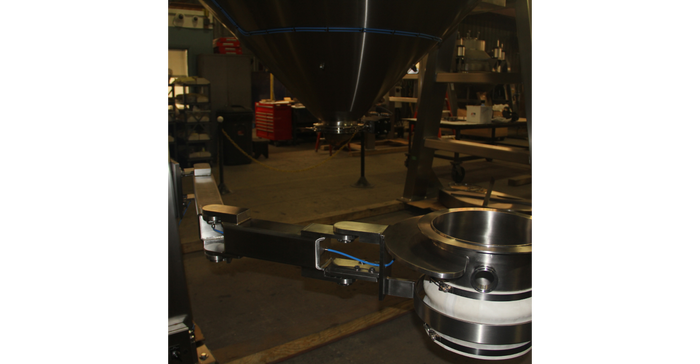Improving Industrial Safety to Eliminate Explosions
The journey to eliminating industrial explosions is multifaceted and requires a concerted effort from all stakeholders.

Explosions can cause catastrophic damage in industrial operations. Every year, several accidents occur that result in the loss of lives and property. Therefore, it is essential to take preventive measures to ensure the safety of workers and protect the equipment. From electrical hazards to combustible dust and volatile chemicals, the potential sources of ignition lurk within the intricate machinery and processes of industrial facilities. However, amidst these challenges lies the opportunity for proactive risk management and the implementation of effective mitigation strategies.
In this article, we delve into the multifaceted nature of industrial explosions, exploring the primary causes and elucidating effective mitigation strategies. From understanding the role of static electricity in ignition to the importance of process safety management in preventing disasters, each aspect contributes to a comprehensive approach to industrial safety.

Advanced Powder Solutions (APS) requires checking safety protocols and SOPs before starting a batch.
Triggers Behind Industrial Catastrophes
Industrial operations are fraught with inherent risks, among the most severe being the threat of explosions. The National Fire Protection Association (NFPA) identifies five primary causes, ranging from electrical hazards to combustible dust and chemical reactions. These hazards, when combined with oxygen, create the perfect storm for potential devastation in industrial settings.
Of these five causes, combustible dust and chemical reactions can be likened to the "fuel" in the fire triangle, while electrical hazards, machinery malfunctions, and hot work serve as sources of ignition. When these elements converge, they pave the way for significant damage and loss of life through explosion or deflagration. It's this understanding of the intricate interplay between fuel and ignition sources that underscores the urgency of implementing robust safety measures in industrial environments.

GEMCO-MATIC fully automatic “one-button” load and discharge. It dramatically reduces vessel loading time and operator downtime.
Examining the underlying causes of industrial explosions provides valuable insights for effectively mitigating these risks. From addressing electrical hazards and ensuring machinery integrity to controlling combustible dust and managing chemical reactions, each aspect plays a pivotal role in safeguarding lives and preserving operational continuity. In the subsequent sections, we'll explore each of these factors in detail, shedding light on practical strategies for preventing industrial explosions and fostering a culture of safety in industrial workplaces.
Combustible Dust Awareness
Combustible dust presents a silent yet significant threat across various industrial sectors, often overlooked until disaster strikes. These fine particles, when suspended in the air, can ignite with catastrophic consequences. Originating from a range of materials and processes, combustible dust lurks in environments such as woodworking, grain handling, metalworking, and chemical processing.
Wood dust, grain dust, sugar dust, flour dust, and metal powders are just a few examples of combustible dust commonly found in industrial settings. Additionally, coal dust, plastic dust, dyes, pigments, rubber dust, textile fibers, pharmaceutical powders, and certain chemical dusts pose significant explosion risks when finely divided and dispersed.

GEMCO-MATIC accommodates any standard or odd-size shipping drums from 26-35 in. high and 18-24 in. in diameter.
One tragic incident exemplifying the dangers of combustible dust occurred recently at a chemical manufacturing facility in Andover, MA. An explosion claimed the life of an employee due to deficiencies in the facility's process safety management program. Among the violations cited by the Occupational Safety and Health Administration (OSHA) were failures to assess combustibility hazards, establish safe temperature limits, evaluate production process deviations, and update safety information. This sobering example underscores the critical importance of rigorous adherence to process safety standards in minimizing hazards and protecting workers' safety and health. Industries must implement robust safety protocols to effectively mitigate the pervasive threat of combustible dust and prevent devastating incidents.
Complexities of Reactive Chemicals
Chemical reactions involving volatile chemicals and metals present significant safety challenges in industrial environments. These reactive substances--often underestimated or overlooked--pose substantial risks to both workers and facilities. It is crucial to understand the complex nature of individual chemicals and their interactions to prevent potential disasters.
Similar to combustible dust, reactive and volatile chemicals can originate from various materials, processes, and industries. Among the top chemicals of concern listed by OSHA are ethanol, methanol, acetone, benzene, heptane, hexane, methyl ethyl ketone (MEK), ethylene oxide, toluene, and dichloromethane. Each of these substances carries its own set of hazards, ranging from flammability and toxicity to reactivity and environmental impact.

Pharm Arm is the seal that tightly seals the liner bag between it and the holding ring. It is dust-tight and with pressure relief.
The repercussions of neglecting proper handling and awareness of these chemicals are underscored by the numerous safety violations identified in recent inspections at industrial facilities. A March 2023 explosion and fire at a battery manufacturing plant in Ohio resulted in 19 health and safety violations, leading to substantial penalties. These violations included failures to implement adequate safety procedures, provide necessary training, and ensure proper use of personal protective equipment.
Instances like these serve as stark reminders of the critical importance of prioritizing workplace safety and adherence to regulatory standards. By cultivating a culture of awareness and vigilance regarding volatile chemicals and their potential interactions, industries can effectively mitigate risks and safeguard both employees and assets.
Mitigating Static Electricity Risks
Static electricity presents a serious hazard in industrial environments, often leading to fires and explosions by igniting flammable substances. These charges commonly arise when materials come into contact and then separate, making it essential to understand and manage static electricity to ensure workplace safety.
Explore the various activities in industrial settings that can generate static electricity, such as filling, spraying, pouring, mixing, flowing, and walking. Recognizing these sources is crucial for implementing effective control measures.
Discover primary methods for controlling static electricity, including bonding and grounding. These strategies play a critical role in dissipating accumulated charges and reducing the risk of ignition. Consider increasing humidity, incorporating antistatic additives, and using specialized clothing and materials.
Access reliable information and guidelines from organizations such as NFPA, the American Petroleum Institute, and CENELEC. Leveraging these resources can enhance safety protocols and minimize the risks associated with static electricity in hazardous environments.

Pharm Arm is the inflatable seal for sealing the liner tightly.
Process Safety Management
Process Safety Management (PSM) is a critical aspect of ensuring safety and preventing catastrophic incidents in industries dealing with hazardous materials. It encompasses a range of disciplines focused on studying, preventing, and managing large-scale fires, explosions, and chemical accidents that could have severe consequences for people, facilities, and the environment.
Regulated by OSHA, PSM of Highly Hazardous Chemicals mandates the establishment of comprehensive safety management programs for facilities handling such substances above defined thresholds. These programs aim to prevent, control, mitigate, and recover from unintentional releases of hazardous materials, safeguarding both on-site and off-site personnel, as well as the surrounding environment.
The PSM program consists of 14 essential elements, including employee participation, process safety information, process hazard analysis, operating procedures, training, contractor management, pre-startup safety review, mechanical integrity, hot work permit, management of change, incident investigation, emergency planning and response, compliance audits, and trade secrets protection. Compliance with these elements is crucial for maintaining a safe working environment and minimizing the risk of accidents and injuries.
Conclusion
The journey to eliminating industrial explosions is multifaceted and requires a concerted effort from all stakeholders. Industrial facilities can minimize the risk of explosions by improving safety protocols through process safety management systems and proactive risk mitigation strategies. Proactive measures to control static electricity and educate personnel on safe operating procedures are crucial steps toward creating safer working environments.
As we move forward, industrial facilities must prioritize safety as a fundamental aspect of their operations. By fostering a culture of safety awareness and continuous improvement, we can collectively work towards the shared goal of eliminating industrial explosions and ensuring the well-being of workers and communities. Collaboration, education, and commitment to excellence can create a safer industrial landscape.
George Paffendorf is VP of operations, at Advanced Powder Solutions, and VP of process engineering & design, at GEMCO. For more information, visit www.okgemco.com.
References
About the Author(s)
You May Also Like




